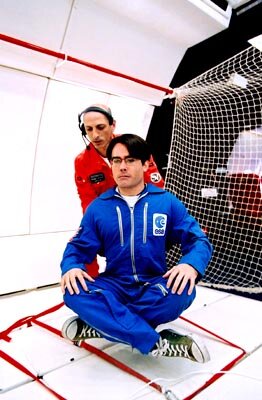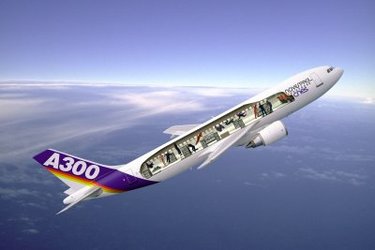ESA Hosts 2006 Student Parabolic Flight Preparatory Workshop
Amid an atmosphere of excitement and expectation, 74 students from 11 ESA Member States recently came together at the European Space Research and Technology Centre (ESTEC) in the Netherlands to participate in the third ESA Student Parabolic Flight Preparatory Workshop.
The workshop, which took place between 10 and 13 April, brought together members of the student teams whose experiments have been selected for the 9th ESA Student Parabolic Flight Campaign (SPFC) that is scheduled to take place between 29 August and 15 September.
During the three and a half day visit, the university students were familiarised with the Erasmus User Centre at ESTEC and the agency’s use of parabolic flights for microgravity research.
However, the most important sessions in the packed programme were those devoted to the students’ visual presentations of their experiments and their subsequent discussions with experts from the scientific community and Novespace, the French company which operates and manages the Airbus A300 aircraft that will be performing the parabolic flight manoeuvres. Feedback from these discussions will enable the student teams to make final improvements to their experiments prior to their arrival in Bordeaux in late August.
The 31 ESA-selected experiments that will fly on the ninth ESA Student Parabolic Flight Campaign were chosen from approximately 100 proposals. Leading the way is Germany, with 8 experiments, followed by Spain and Italy. The flights will also carry one additional experiment which is funded by the Italian Space Agency and six Belgian-sponsored experiments.

16 of this year’s winning proposals are devoted to physics, ranging from the effect of a magnetic field on a flame’s colour to a study of water hammering in pipes. Another 8 experiments are technology demonstrations, with the remainder related to biology and human life sciences.
“The experiments were chosen according to the merit of the proposals,” explained Elisabeth Celton, ESA Coordinator for the 2006 SPFC. “They were evaluated on many different criteria by scientists, technical experts, members of the ESA Education Department and Novespace.”
Over the coming months, the 120 ESA-selected students will construct their experiments and undergo a medical examination. The first group is scheduled to arrive at Bordeaux on 30 August in order to install their experiments on the aircraft.
They will eventually fly in two groups of 15 teams, each with one back-up team. In order to accommodate the Belgian-sponsored student experiments, there will be five flights between 5 and 13 September.
During each flight, the teams will experience a succession of 31 parabolas, each one offering approximately 20 seconds of microgravity. The experiments will be located inside a specially adapted Airbus A300.
“This is a fantastic opportunity that helps European students to gain valuable experience in managing their own research project, just as in the world of professional science,” said Elisabeth Celton.





